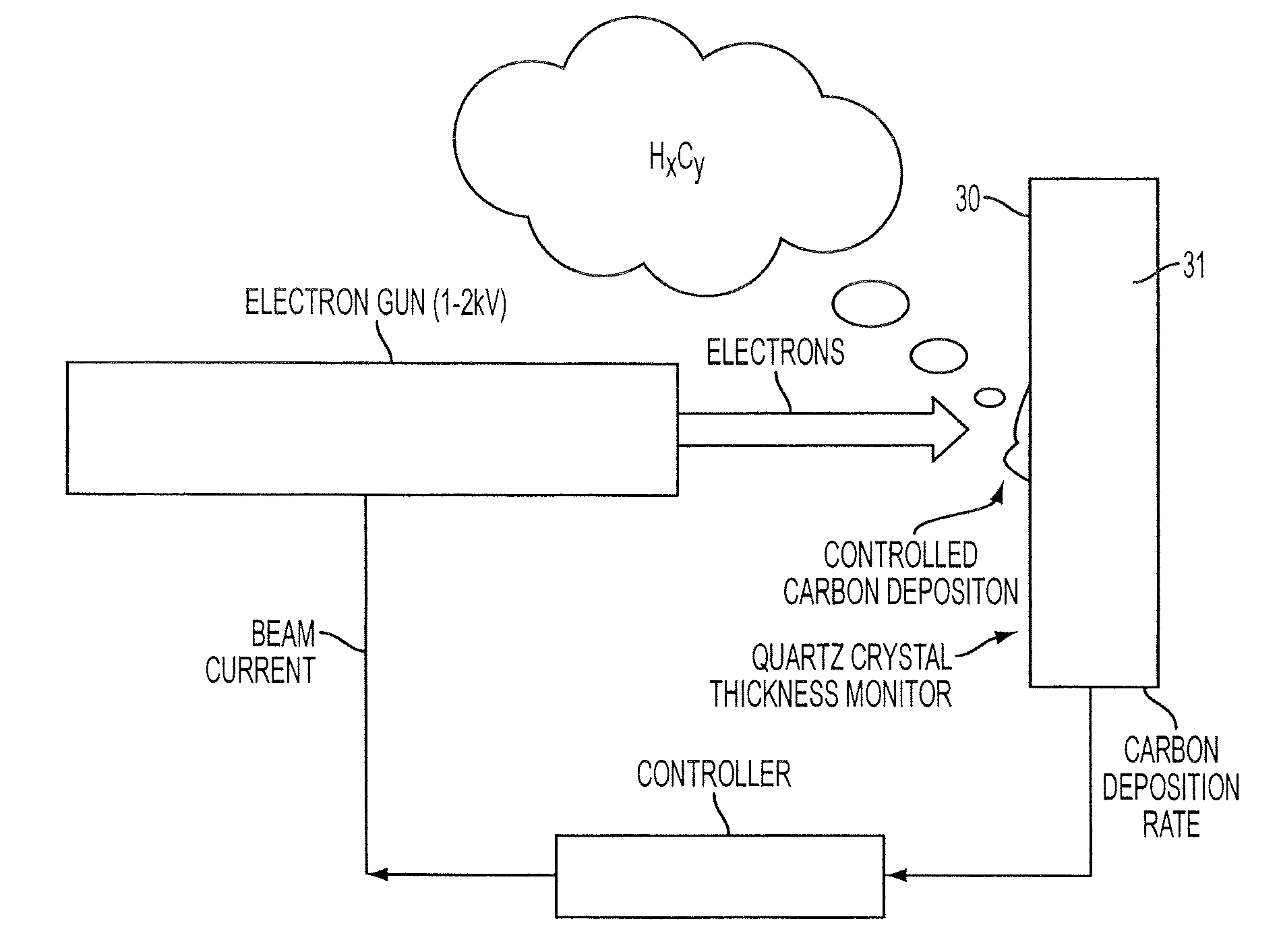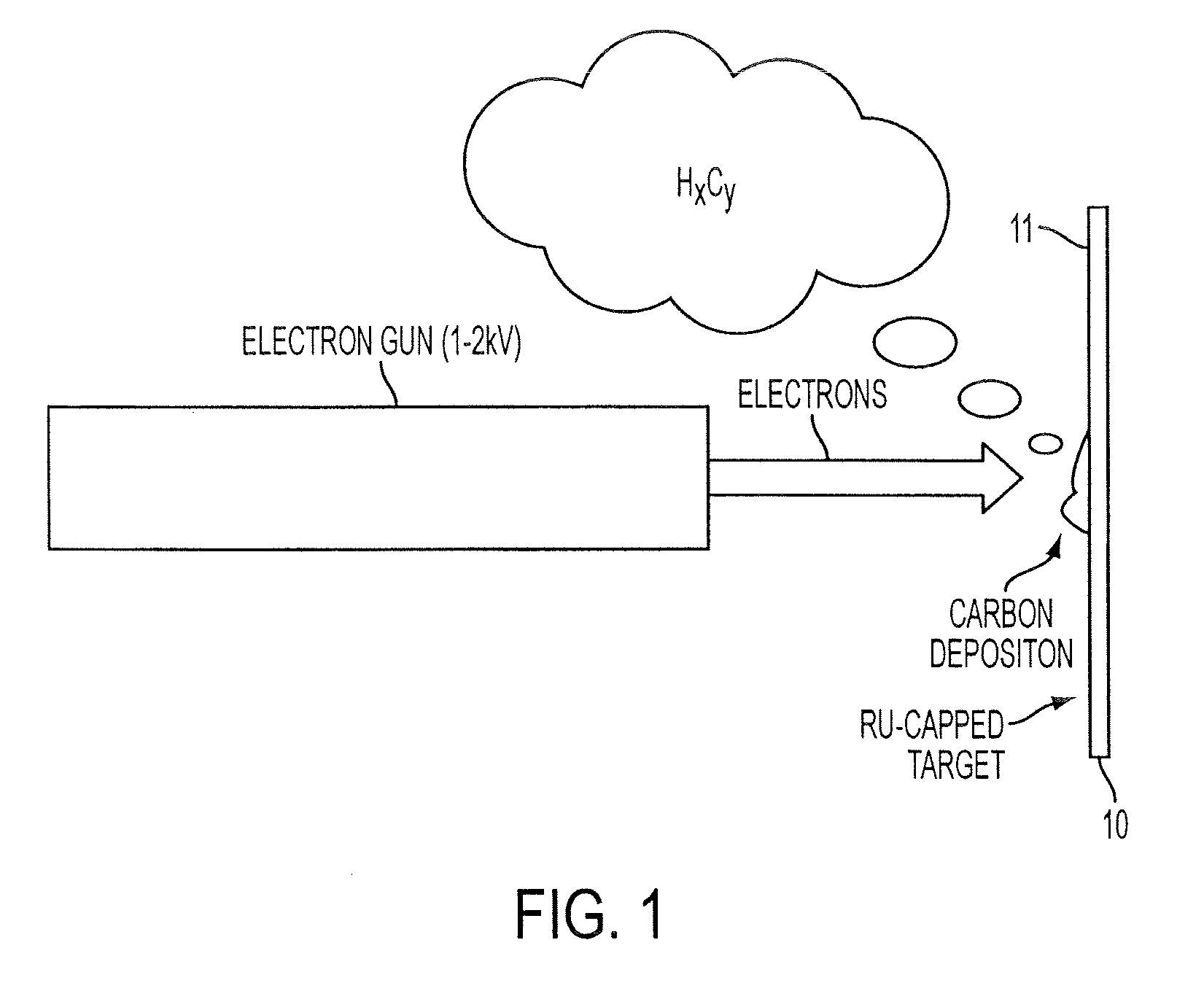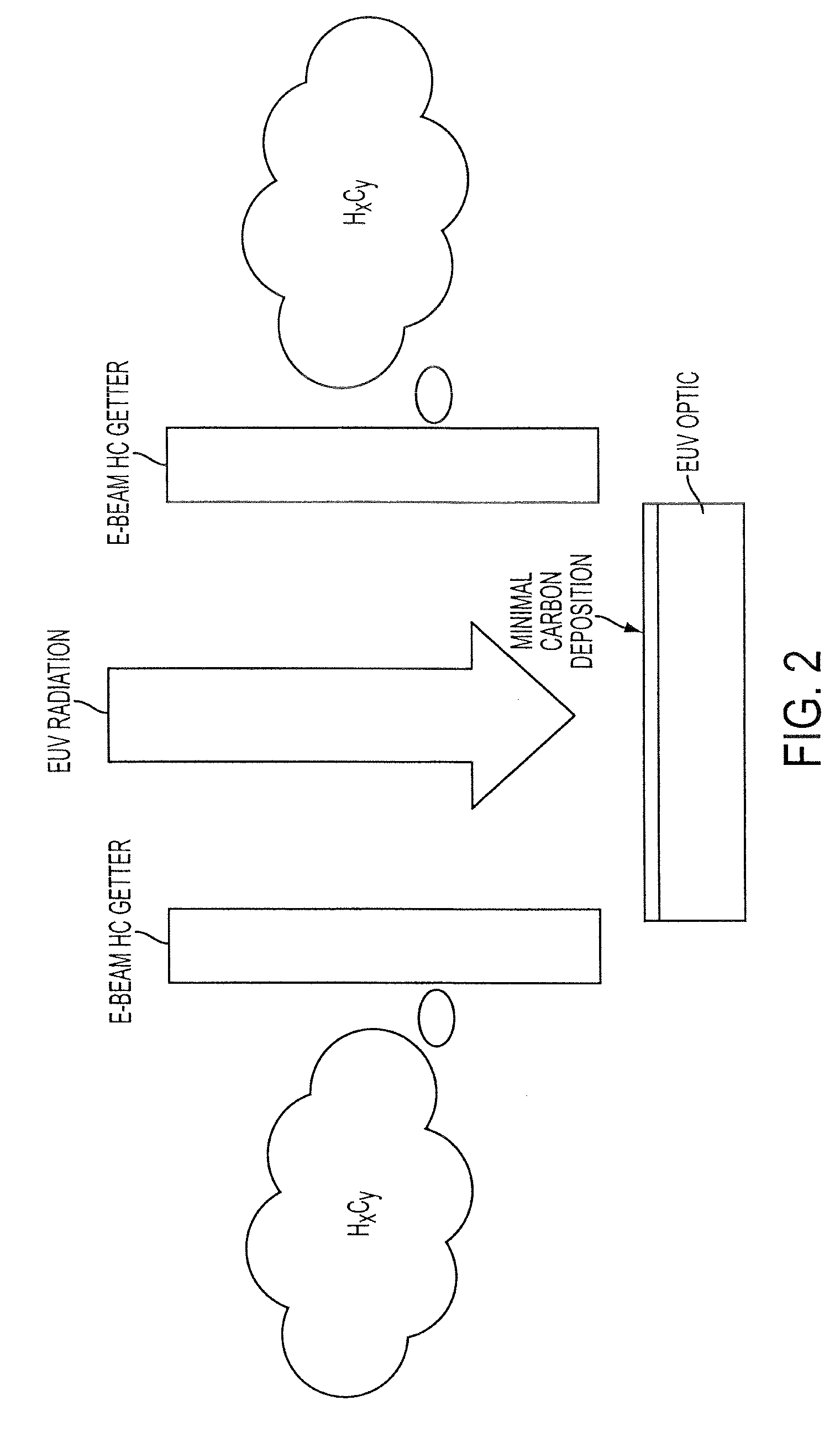Hydrocarbon getter for lithographic exposure tools
a lithographic exposure and hydrocarbon technology, applied in the direction of printers, instruments, therapy, etc., can solve the problems of increasing manufacturing costs, increasing the difficulty of achieving high dimensional accuracy in an efficient manner with high manufacturing throughput, and euv lithography exposure tools, which have been problematic, so as to reduce the carbon deposition on optical elements, reduce the effect of carbon deposition, and avoid adverse oxidation and adverse carbon deposition
- Summary
- Abstract
- Description
- Claims
- Application Information
AI Technical Summary
Benefits of technology
Problems solved by technology
Method used
Image
Examples
Embodiment Construction
[0021]The present invention addresses and solves problems attendant upon the use of lithographic exposure tools, such as lithographic exposure tools that operate under a very short wavelength, e.g., soft X-ray and EUV wavelength range radiation, by minimizing and controlling carbon deposition on and preventing oxidation of reflective optical elements, thereby reducing downtime and increasing manufacturing throughput.
[0022]Embodiments of the present invention include carefully controlling the partial pressure of heavy hydrocarbons in an EUV lithography exposure tool, such as at a level of about 10−9 mbar to about 10−7 mbar, so that it is high enough to prevent oxidation of the reflective optical coatings but low enough to avoid rapid build up of a carbon film thereon. Carbon contamination results from hydrocarbon cracking by EUV radiation from the primary EUV source of the exposure tool.
[0023]Embodiments of the present invention include positioning a hydrocarbon getter in a conventio...
PUM
 Login to View More
Login to View More Abstract
Description
Claims
Application Information
 Login to View More
Login to View More - R&D
- Intellectual Property
- Life Sciences
- Materials
- Tech Scout
- Unparalleled Data Quality
- Higher Quality Content
- 60% Fewer Hallucinations
Browse by: Latest US Patents, China's latest patents, Technical Efficacy Thesaurus, Application Domain, Technology Topic, Popular Technical Reports.
© 2025 PatSnap. All rights reserved.Legal|Privacy policy|Modern Slavery Act Transparency Statement|Sitemap|About US| Contact US: help@patsnap.com



